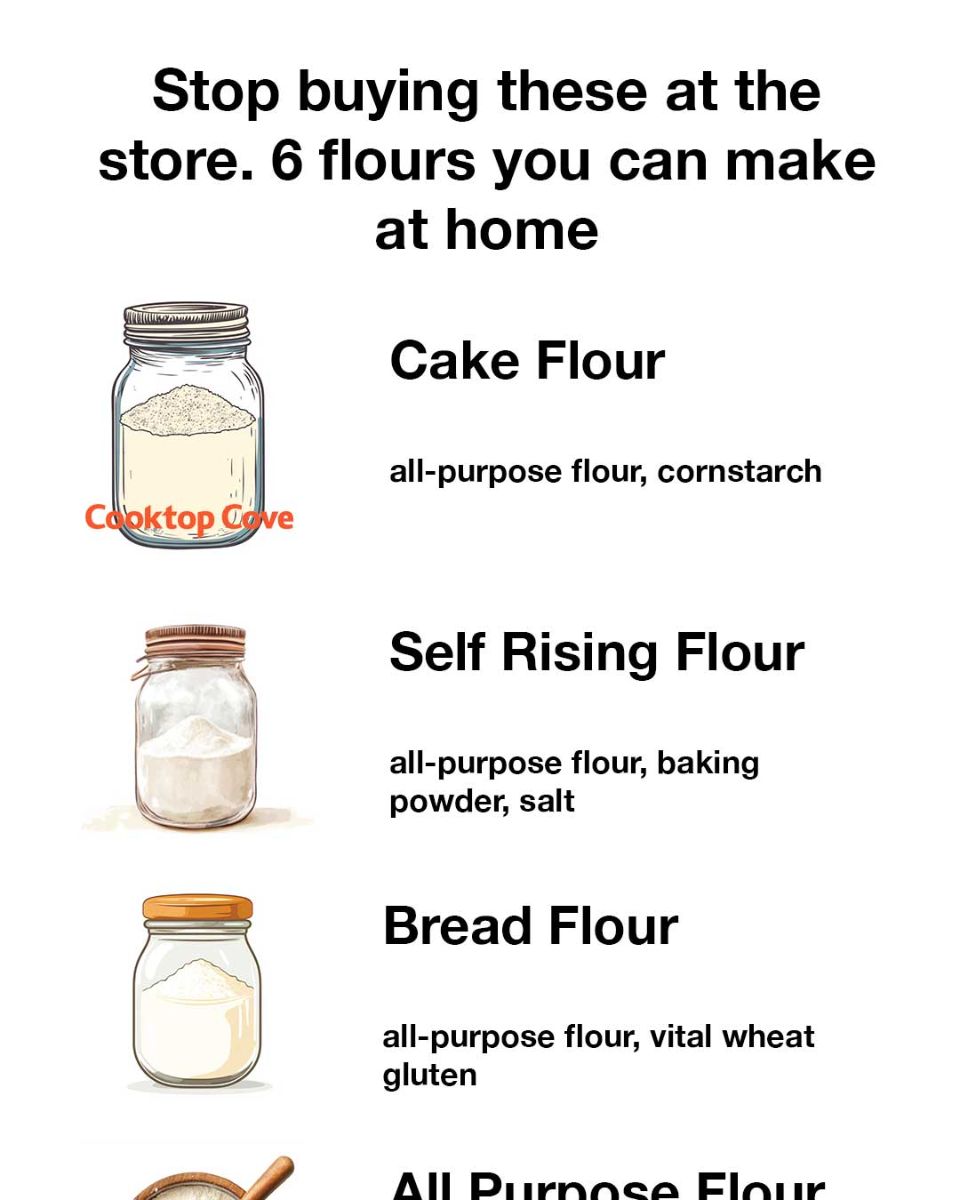Instructions:
In a bowl, add 1 cup of all-purpose flour.
Stir in 1 tablespoon of vital wheat gluten—a concentrated protein powder that enhances the elasticity and strength of dough.
Whisk or sift the mixture together to evenly incorporate the gluten.
Use in recipes that call for bread flour, such as homemade sandwich loaves, pizza dough, or artisan bread.
Note: Vital wheat gluten can be found in the baking aisle or health food section of most grocery stores.
4. Homemade Gluten-Free Flour Blend
For those with gluten sensitivities or celiac disease, a gluten-free flour blend is essential.
Ingredients:
2 cups rice flour (white or brown)
2/3 cup potato starch
1/3 cup tapioca flour (also called tapioca starch)
Instructions:
In a large bowl, combine 2 cups of rice flour, 2/3 cup of potato starch, and 1/3 cup of tapioca flour.
Mix thoroughly until well blended.
Store in an airtight container in a cool, dry place.
Usage: Substitute this blend 1:1 for all-purpose flour in most recipes. For best results in baked goods, consider adding a binder like xanthan gum or guar gum (typically 1/2 teaspoon per cup of flour).
5. Making All-Purpose Flour at Home
While all-purpose flour is widely available, making it at home allows you to ensure its freshness and quality.
Ingredients:
Whole wheat berries
Equipment:
Grain mill or high-powered blender
Fine mesh sieve or flour sifter
Instructions:
Place whole wheat berries into a grain mill or a high-speed blender.
Grind until a fine flour is achieved.
To turn whole wheat flour into something closer to all-purpose flour, sift the flour to remove the bran and germ. This will result in a lighter flour with a finer texture.
Repeat sifting as needed to reach desired consistency.
Store in an airtight container, away from heat and light, to preserve freshness.
Tip: Homemade all-purpose flour is less refined but still versatile for baking, cooking, and thickening.
6. DIY Whole Wheat Flour
Whole wheat flour is a nutritious alternative to refined flours, as it contains the entire grain, including the bran and germ.
Ingredients:
Whole wheat berries
Equipment:
Grain mill or high-speed blender
Instructions:
Pour whole wheat berries into your grain mill or blender.
Grind on high until you achieve a consistent, slightly coarse flour texture.
Unlike all-purpose flour, do not sift—you want to retain the bran and germ for full nutritional value.
Store the flour in an airtight container, ideally in the refrigerator or freezer to keep it fresh longer (since the oils in the germ can spoil over time).
Tips for Storing Homemade Flours
Proper storage is key to maintaining the freshness and quality of homemade flours. Store your flours in airtight containers to protect them from moisture and pests. Keep them in a cool, dark place, such as a pantry or cupboard. For long-term storage, consider refrigerating or freezing your flours, especially whole grain flours, which can spoil more quickly due to their higher oil content. Label your containers with the type of flour and the date it was made to keep track of freshness.
Conclusion: Embrace the Art of Homemade Flours
Making your own flour at home is a rewarding endeavor that offers numerous benefits, from improved quality and freshness to cost savings and customization. By experimenting with different grains and blends, you can create flours that suit your specific dietary needs and culinary preferences. Embrace the art of homemade flours and enjoy the satisfaction of crafting a key ingredient in your kitchen from scratch. Not only will you enhance your cooking and baking, but you’ll also gain a deeper appreciation for the simple yet essential ingredient that is flour.

